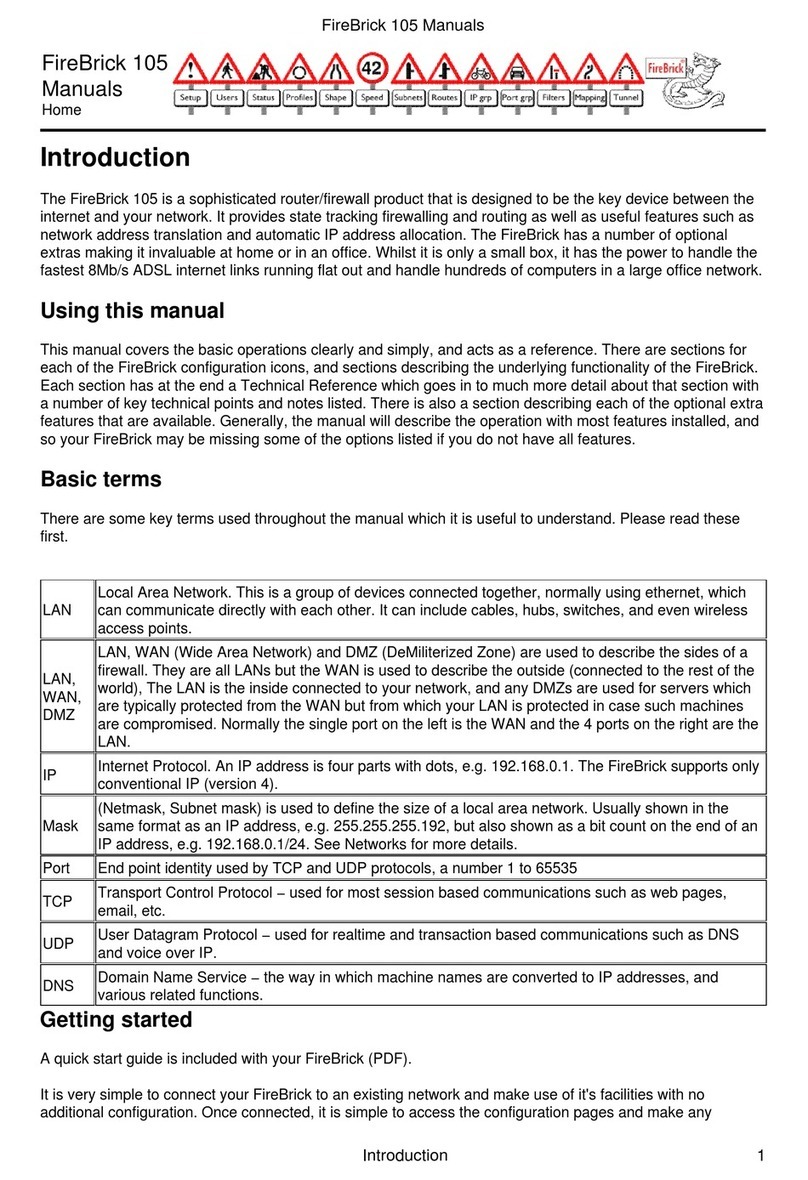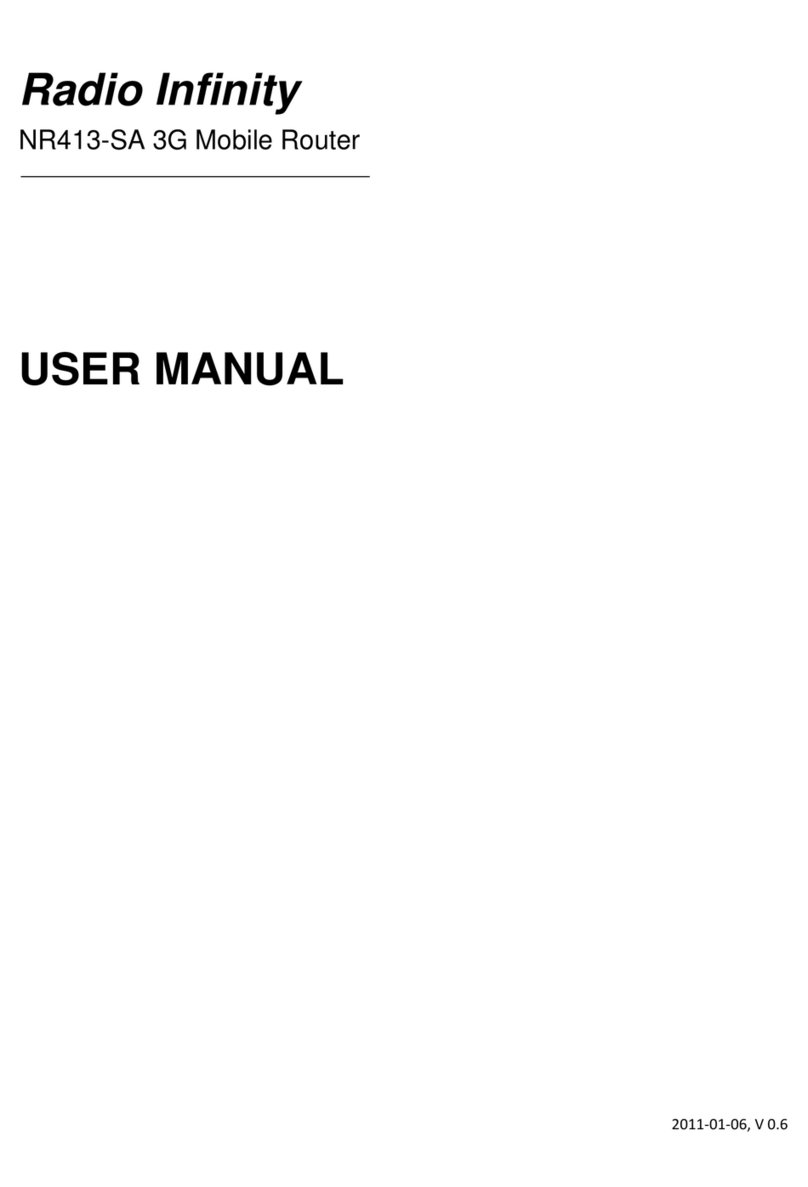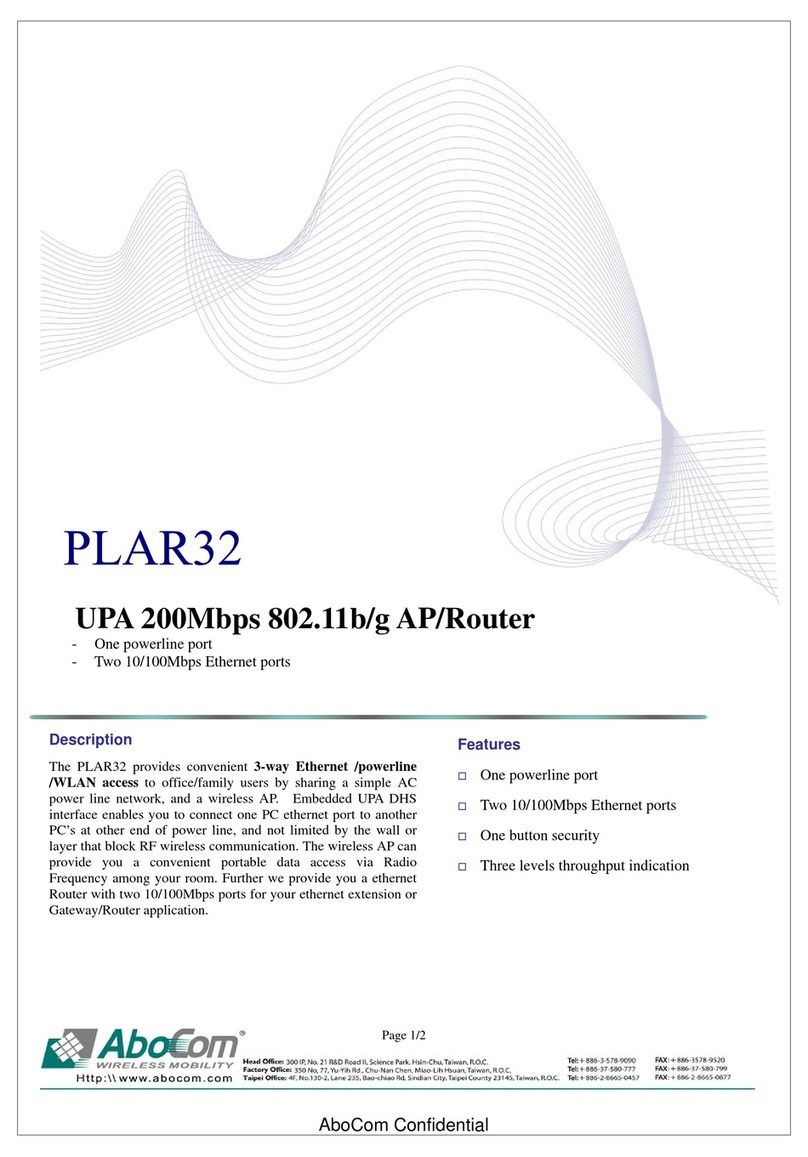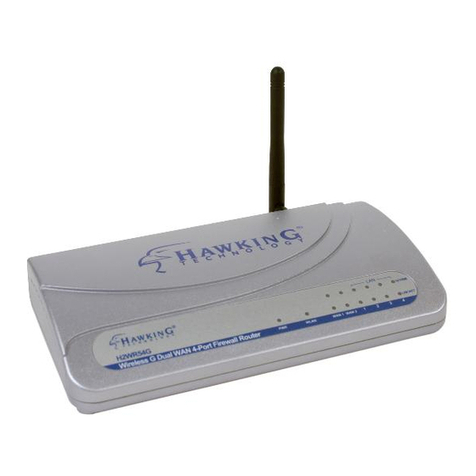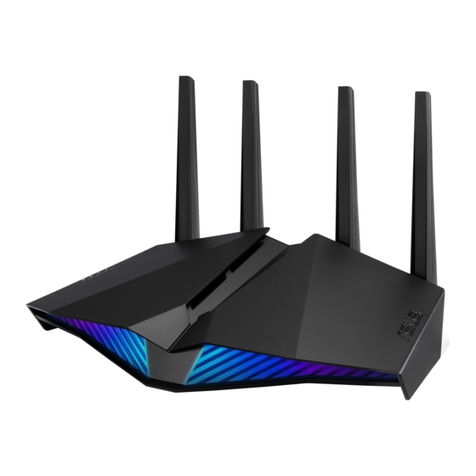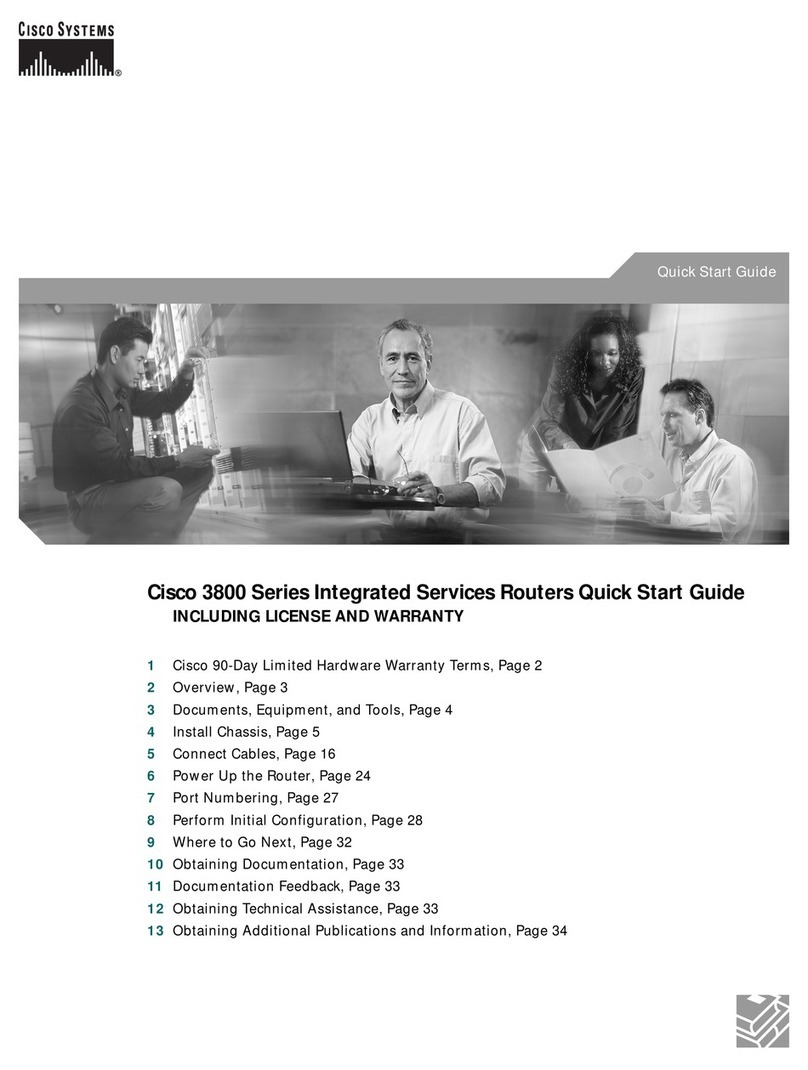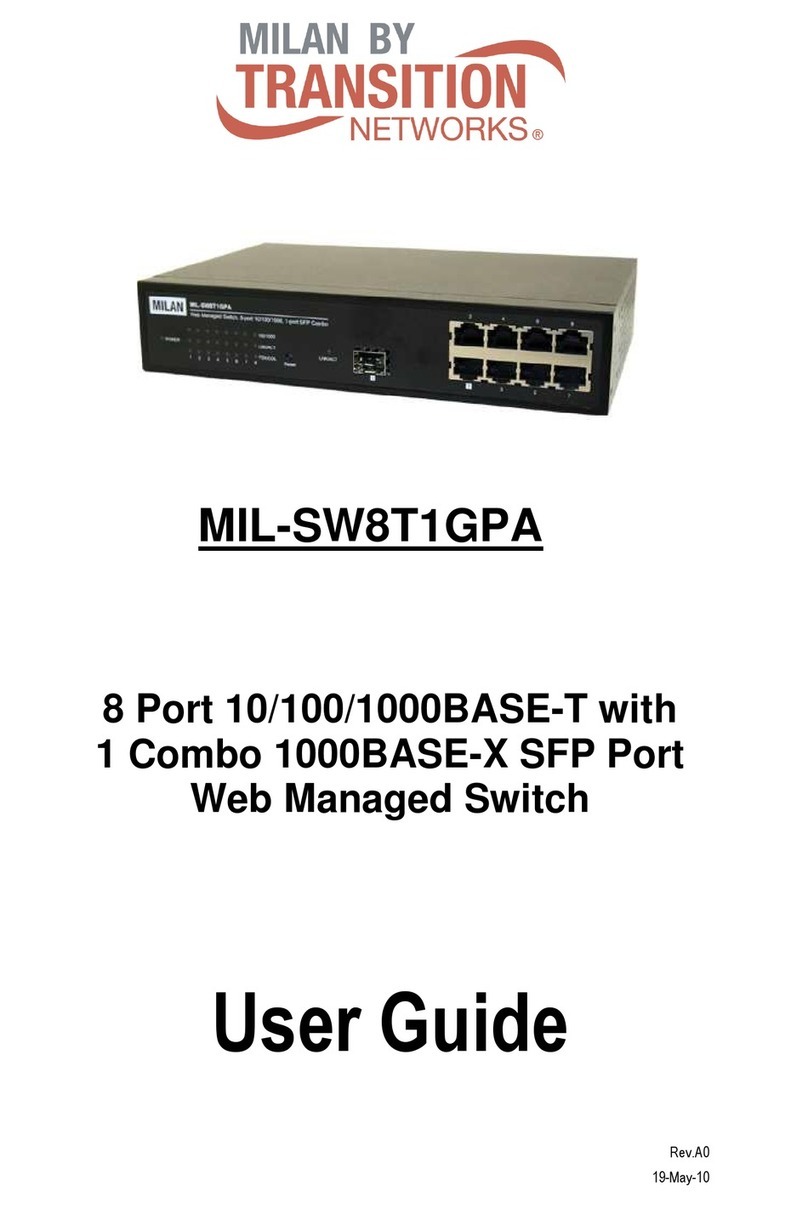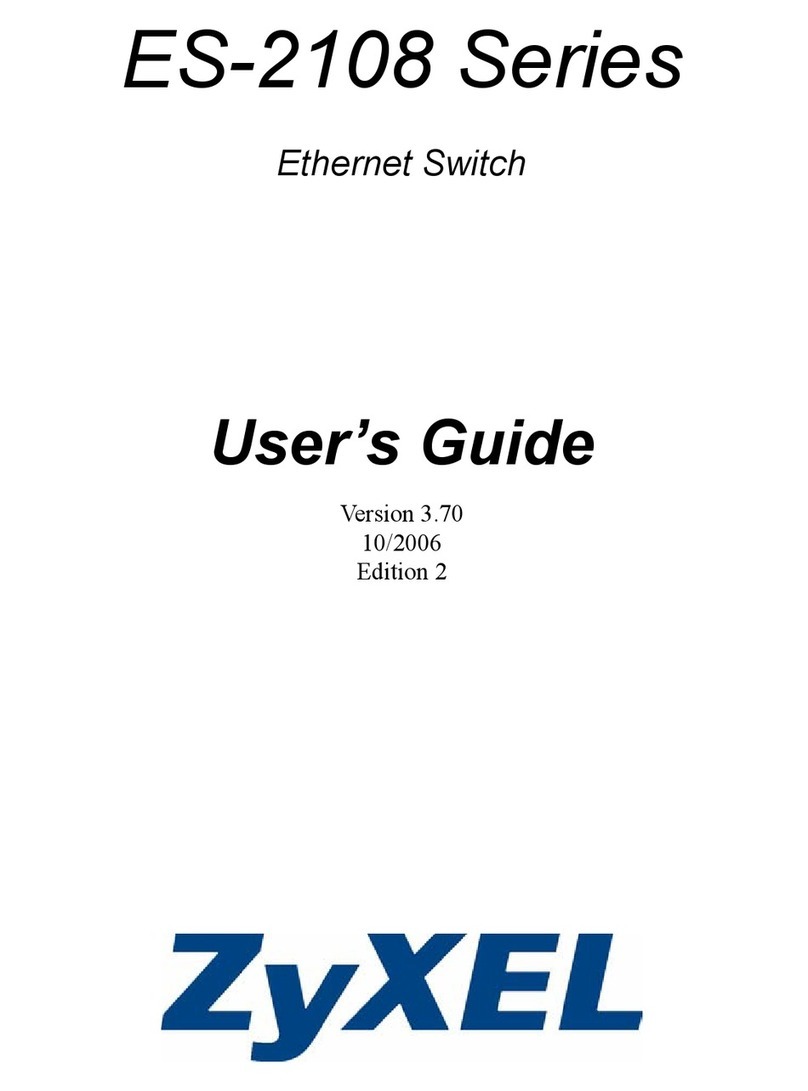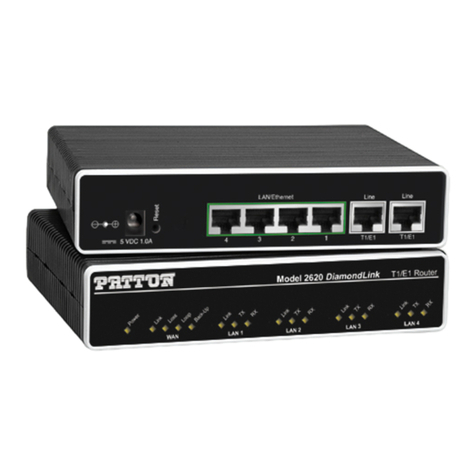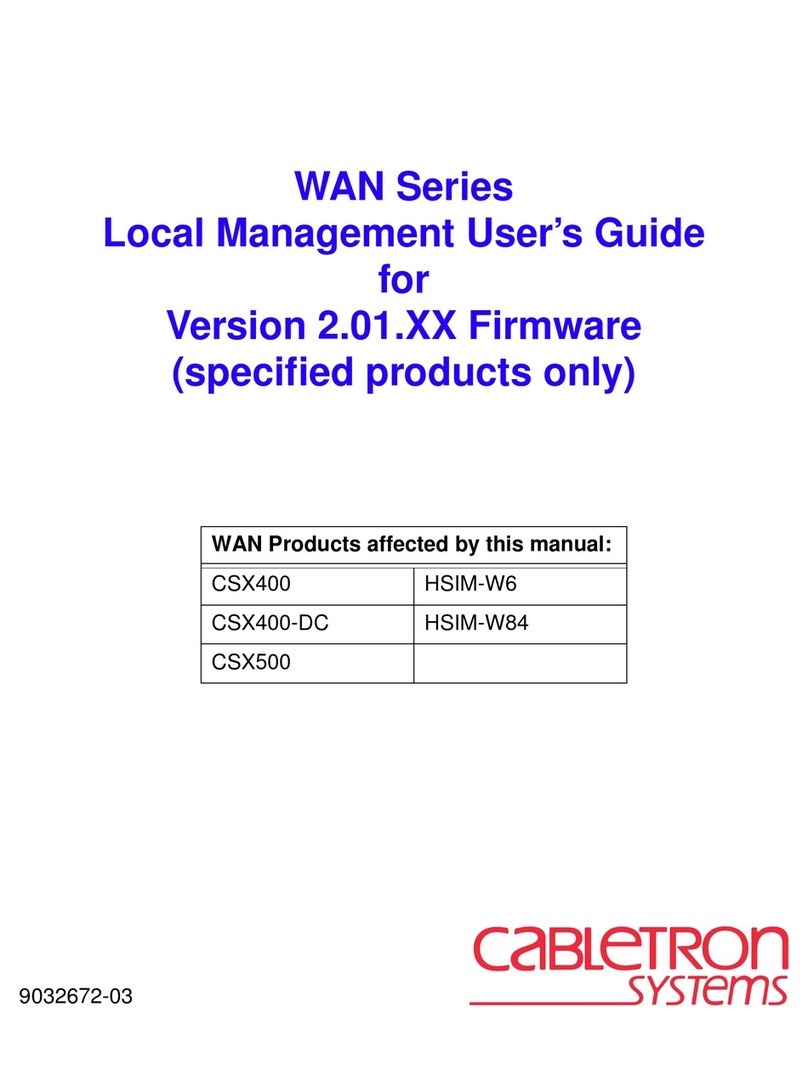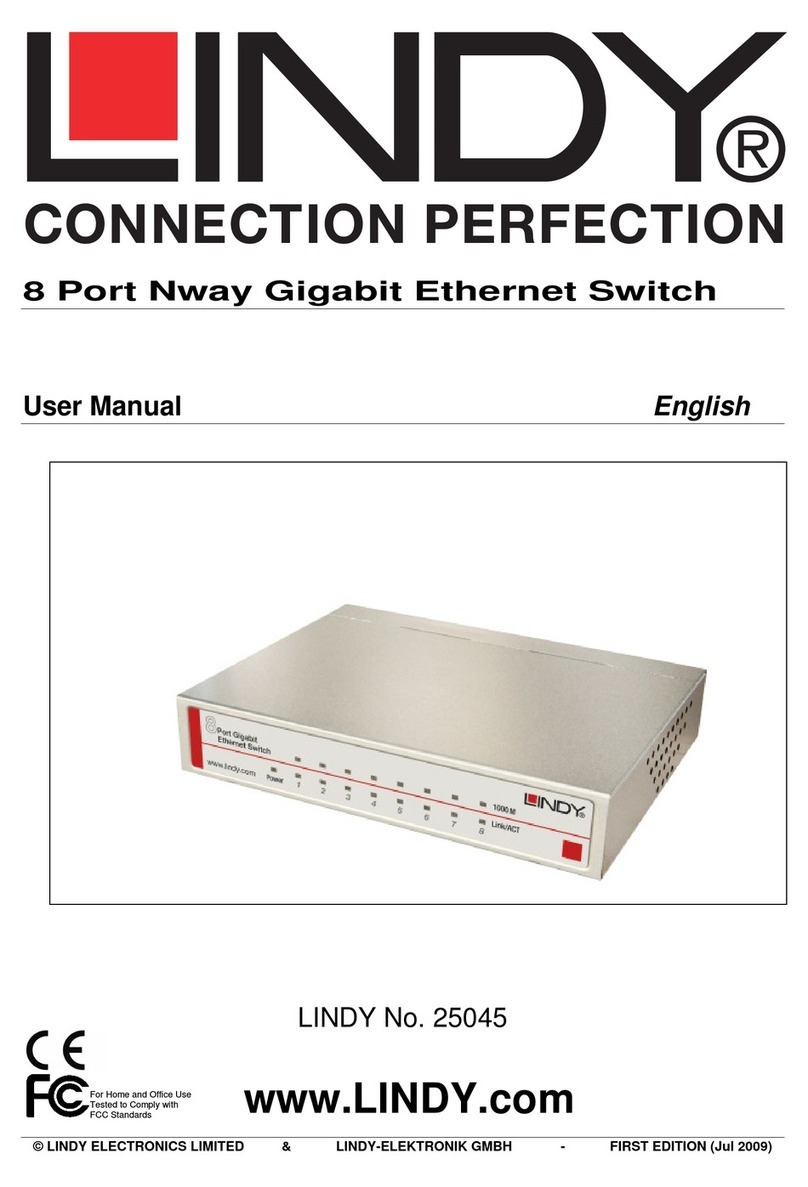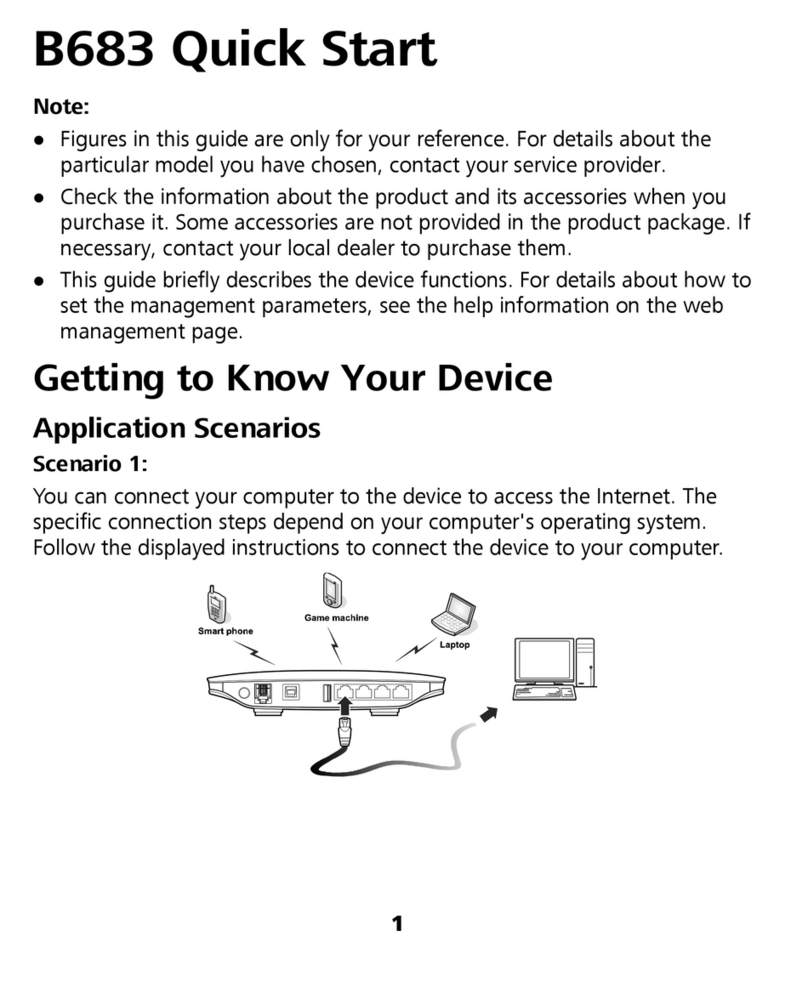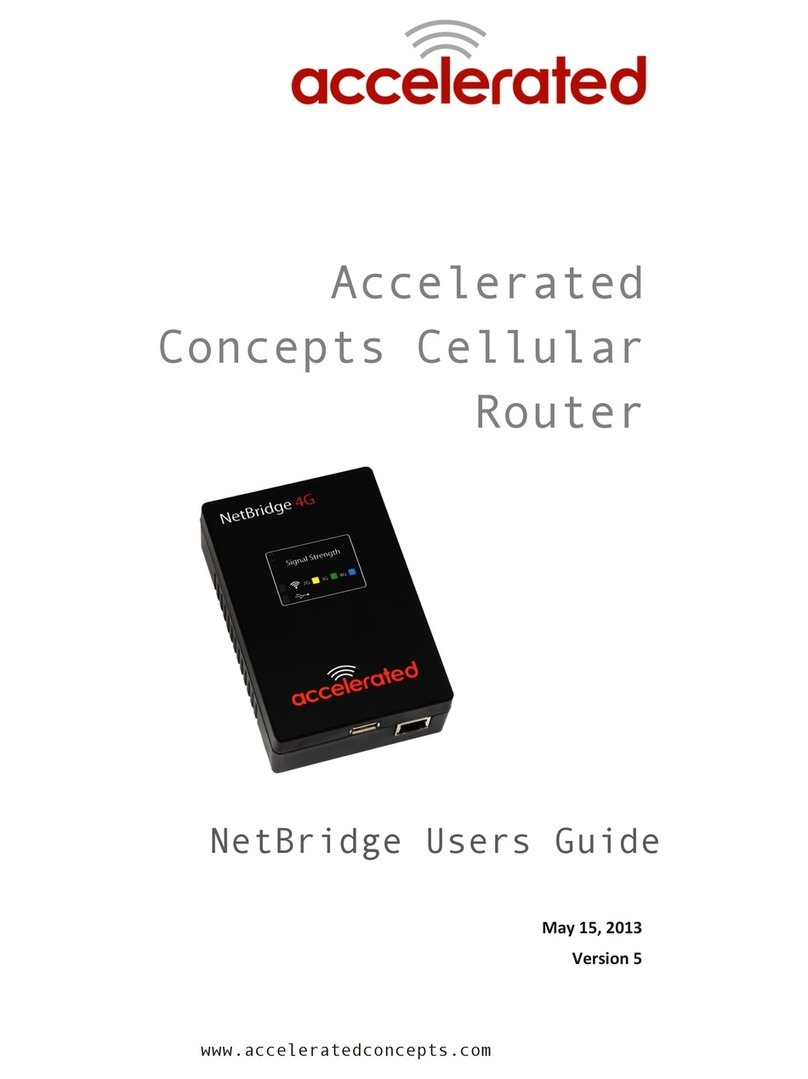Delta DVS-328 series User manual

www.deltaww.com
DVS Managed Industrial
Rack Mount Ethernet Switch
User Manual
Product Model:
DVS-328 series
2017-01-12
DVS Managed Industrial Rack Mount Ethernet Switch User Manual
Industrial Automation Headquarters
Delta Electronics, Inc.
Taoyuan Technology Center
No.18, Xinglong Rd., Taoyuan City,
Taoyuan County 33068, Taiwan
TEL: 886-3-362-6301 / FAX: 886-3-371-6301
Asia
Delta Electronics (Jiangsu) Ltd.
Wujiang Plant 3
1688 Jiangxing East Road,
Wujiang Economic Development Zone
Wujiang City, Jiang Su Province, P.R.C. 215200
TEL: 86-512-6340-3008 / FAX: 86-769-6340-7290
Delta Greentech (China) Co., Ltd.
238 Min-Xia Road, Pudong District,
ShangHai, P.R.C. 201209
TEL: 86-21-58635678 / FAX: 86-21-58630003
Delta Electronics (Japan), Inc.
Tokyo Ofce
2-1-14 Minato-ku Shibadaimon,
Tokyo 105-0012, Japan
TEL: 81-3-5733-1111 / FAX: 81-3-5733-1211
Delta Electronics (Korea), Inc.
1511, Byucksan Digital Valley 6-cha, Gasan-dong,
Geumcheon-gu, Seoul, Korea, 153-704
TEL: 82-2-515-5303 / FAX: 82-2-515-5302
Delta Electronics Int’l (S) Pte Ltd.
4 Kaki Bukit Ave 1, #05-05, Singapore 417939
TEL: 65-6747-5155 / FAX: 65-6744-9228
Delta Electronics (India) Pvt. Ltd.
Plot No 43 Sector 35, HSIIDC
Gurgaon, PIN 122001, Haryana, India
TEL : 91-124-4874900 / FAX : 91-124-4874945
Americas
Delta Products Corporation (USA)
Raleigh Ofce
P.O. Box 12173,5101 Davis Drive,
Research Triangle Park, NC 27709, U.S.A.
TEL: 1-919-767-3800 / FAX: 1-919-767-8080
Delta Greentech (Brasil) S.A.
Sao Paulo Ofce
Rua Itapeva, 26 - 3° andar Edicio Itapeva One-Bela Vista
01332-000-São Paulo-SP-Brazil
TEL: 55 11 3568-3855 / FAX: 55 11 3568-3865
Europe
Delta Electronics (Netherlands) B.V.
Eindhoven Ofce
De Witbogt 20, 5652 AG Eindhoven, The Netherlands
TEL : +31 (0)40-8003800 / FAX : +31 (0)40-8003898
*We reserve the right to change the information in this manual without prior notice.

i
DVS Managed Industrial
Rack Mount Ethernet Switch User Manual
Table of Contents
Chapter 1 Introduction
1.1 Feature......................................................................................1-2
1.1.1 High Performance Network Technology....................................1-2
1.1.2 Industrial Grade Reliability .....................................................1-2
1.1.3 Robust Design ......................................................................1-2
1.1.4 Front Panel Ports and LEDs ....................................................1-3
1.2 SFP Module Installation................................................................1-3
1.3 Package Checklist .......................................................................1-4
1.4 MTBF (Mean Time Between Failures) .............................................1-4
Chapter 2 User Interface Introduction
2.1 USB Console Configuration...........................................................2-2
2.2 Telnet Console Configuration ........................................................2-5
2.3 Web Browser Configuration ..........................................................2-6
Chapter 3 Featured Functions
3.1 Basic Setting ..............................................................................3-5
3.1.1 System Information ..............................................................3-5
3.1.2 Network Interface .................................................................3-6
3.1.2.1 IPv4 Network Configuration...............................................3-6
3.1.2.2 IPv6 Network Configuration...............................................3-7
3.1.2.3 IPv6 Network Neighbor.....................................................3-8
3.1.3 Port Settings ........................................................................3-9
3.1.3.1 Port Settings....................................................................3-9
3.1.3.2 LAG Settings .................................................................3-10
3.1.4 Time .................................................................................3-11
3.1.4.1 SNTP Scalars Configuration .............................................3-11
3.1.4.2 SNTP Unicast Server Configuration...................................3-12
3.1.5 DHCP/BOOTP Settings .........................................................3-13
3.1.5.1 DHCP Server .................................................................3-13
3.1.5.2 DHCP Relay ...................................................................3-17
3.1.5.3 DHCP L2 Relay...............................................................3-19

ii
3.1.6 DNS..................................................................................3-23
3.1.6.1 DNS Configuration .........................................................3-23
3.1.6.2 Host Configuration .........................................................3-24
3.1.7 System File Update.............................................................3-24
3.1.7.1 Download File................................................................3-24
3.1.7.2 Upload File....................................................................3-26
3.1.8 Management Access............................................................3-28
3.1.8.1 HTTP Configuration ........................................................3-28
3.1.8.2 HTTPS ..........................................................................3-28
3.1.8.3 SSH Configuration..........................................................3-31
3.1.8.4 Telnet Configuration .......................................................3-32
3.1.8.5 Console Port..................................................................3-33
3.1.9 Loopback-Detection.............................................................3-33
3.1.9.1 Global Configuration.......................................................3-33
3.1.9.2 Port Configuration..........................................................3-34
3.1.10 EtherNet/IP.....................................................................3-35
3.2 SNMP Manager .........................................................................3-35
3.2.1 SNMP v1/v2c......................................................................3-35
3.2.1.1 Community Configuration................................................ 3-35
3.2.1.2 Trap Configuration..........................................................3-36
3.2.1.3 Trap Flags .....................................................................3-37
3.2.2 SNMP v3............................................................................3-38
3.2.2.1 User Configuration .........................................................3-38
3.3 Network Redundancy.................................................................3-40
3.3.1 STP...................................................................................3-40
3.3.1.1 STP Configuration ..........................................................3-44
3.3.1.2 CST Configuration..........................................................3-45
3.3.1.3 CST Port Configuration ...................................................3-48
3.3.1.4 CST Port Status .............................................................3-50
3.3.1.5 MST Configuration..........................................................3-52
3.3.1.6 MST Port Status.............................................................3-53
3.3.1.7 STP Statistics ................................................................3-55
3.3.2 Redundancy.......................................................................3-57
3.3.2.1 ONE RING Configuration .................................................3-57
3.3.2.2 ONE CHAIN Configuration ...............................................3-57
3.3.2.3 ONE COUPLING Configuration..........................................3-58
3.3.2.4 Redundancy Cruiser .......................................................3-59

iii
3.4 Virtual LANs .............................................................................3-61
3.4.1 VLAN Mode Configuration.....................................................3-62
3.4.2 VLAN Configuration .............................................................3-62
3.4.3 VLAN Membership...............................................................3-63
3.4.4 VLAN Status.......................................................................3-64
3.4.5 Port PVID Configuration .......................................................3-64
3.4.6 GVRP Configuration.............................................................3-65
3.4.7 Double VLAN Configuration ..................................................3-66
3.4.8 MAC Based VLAN ................................................................3-68
3.4.9 IP Subnet Based VLAN.........................................................3-68
3.5 Multicast Filtering......................................................................3-69
3.5.1 IGMP Snooping Configuration ...............................................3-70
3.5.2 IGMP VLAN Configuration.....................................................3-71
3.5.3 IGMP Snooping Multicast Forwarding Table.............................3-72
3.5.4 Multicast MAC Address Configuration.....................................3-72
3.5.5 GMRP Configuration.............................................................3-73
3.5.6 Multicast Forwarding Table ...................................................3-74
3.6 Traffic Prioritization ...................................................................3-74
3.6.1 QoS...................................................................................3-75
3.6.1.1 QoS Setting
...................................................................3-75
3.6.1.2 CoS Queue Mapping .......................................................3-76
3.6.1.3 DSCP Queue Mapping .....................................................3-76
3.7 Traffic Control...........................................................................3-78
3.7.1 Port Protected.....................................................................3-78
3.7.2 Port Isolation Configuration..................................................3-78
3.8 Port Bandwidth .........................................................................3-79
3.8.1 Storm Control.....................................................................3-79
3.8.1.1 Storm Control Setting.....................................................3-79
3.8.1.2 Rate Limiting .................................................................3-81
3.9 Port Trunking............................................................................3-82
3.9.1 LAG...................................................................................3-82
3.9.1.1 LAG Membership............................................................3-82
3.9.1.2 LAG Information ............................................................3-83
3.10 Access Control List.................................................................3-84
3.10.1 MAC ACL.........................................................................3-84
3.10.1.1 MAC Rules.....................................................................3-85
3.10.1.2 MAC Binding Configuration ..............................................3-87
3.10.2 Binding Table...................................................................3-88

iv
3.11 Security Settings ...................................................................3-88
3.11.1 Security..........................................................................3-88
3.11.1.1 Port Security .................................................................3-88
3.11.1.2 IP Source......................................................................3-90
3.11.1.3 802.1X .........................................................................3-91
3.11.2 Management Security.......................................................3-96
3.11.2.1 Local Users Management ................................................3-96
3.11.2.2 RADIUS Server Config ....................................................3-97
3.11.2.3 RADIUS Statistics...........................................................3-98
3.11.2.4 TACACS+ Server............................................................3-99
3.11.2.5 TACACS+ AS.................................................................3-99
3.11.2.6 Login Authentication..................................................... 3-100
3.11.2.7 Login User Sessions ..................................................... 3-100
3.11.3 Denial of Service ........................................................... 3-101
3.12 Monitoring Settings.............................................................. 3-102
3.12.1 MAC Address Table......................................................... 3-102
3.12.2 SFP DDM (Only for SFP Module)....................................... 3-104
3.12.3 System CPU Status ........................................................ 3-104
3.12.4 Interface Statistics......................................................... 3-105
3.12.5 ARP Configure ............................................................... 3-105
3.12.5.1 Basic .......................................................................... 3-105
3.12.6 RMON .......................................................................... 3-106
3.12.6.1 Basic Settings.............................................................. 3-106
3.12.6.2 Alarms........................................................................ 3-106
3.12.6.3 Events........................................................................ 3-108
3.12.6.4 Event Log ................................................................... 3-108
3.12.6.5 History ....................................................................... 3-109
3.12.6.6 RMON Ethernet Statistics .............................................. 3-109
3.12.6.7 Ethernet History Statistics............................................. 3-111
3.12.7 SYSLOG........................................................................ 3-113
3.12.7.1 Show Logs .................................................................. 3-113
3.12.7.2 Logs Configuration ....................................................... 3-113
3.12.7.3 Syslog Fwd Table ......................................................... 3-115
3.12.7.4 Syslog Email Configuration............................................ 3-116
3.12.7.5 Syslog Email Alarm Table .............................................. 3-117
3.13 Diagnostic Settings .............................................................. 3-119
3.13.1 LLDP ............................................................................ 3-119
3.13.1.1 LLDP Basic Settings...................................................... 3-119

v
3.13.1.2 LLDP Interface Configuration .........................................3-120
3.13.1.3 LLDP TLV Options.........................................................3-121
3.13.1.4 LLDP Local Information .................................................3-121
3.13.1.5 LLDP Neighbor Information............................................3-123
3.13.1.6 LLDP Traffic .................................................................3-125
3.13.1.7 LLDP-MED Global Configuration......................................3-126
3.13.1.8 LLDP-MED Interface Configuration..................................3-126
3.13.2 Port Mirroring ................................................................3-127
3.13.2.1 Multiple Port Mirroring...................................................3-127
3.13.2.2 Cable Diagnostics.........................................................3-129
3.14 Auto Warning ......................................................................3-130
3.14.1 Relay Alarm...................................................................3-130
3.14.1.1 Relay Alarm Setting......................................................3-130
3.14.1.2 Relay Alarm Table.........................................................3-132
3.15 Dual Image .........................................................................3-133
3.15.1 Copy ............................................................................3-133
3.15.2 Configuration.................................................................3-133
3.16 Save Config.........................................................................3-134
3.16.1 Save Configuration.........................................................3-134
3.16.2 Auto-Save Configuration…...
............................................3-134
3.16.3 Configuration Copy…... ...................................................3-134
3.16.4 Restore.........................................................................3-135
3.16.5 Erase............................................................................3-135
3.17 Reset..................................................................................3-135
3.17.1 Device Reboot ...............................................................3-135
3.17.2 Factory Default Settings..................................................3-136
3.18 Troubleshooting ...................................................................3-136
3.18.1 Ping IPv4 ......................................................................3-136
3.18.2 Ping IPv6 ......................................................................3-137
3.18.3 Traceroute IPv4 .............................................................3-138
3.18.4 Traceroute IPv6 .............................................................3-138
3.19 Logout................................................................................3-139

vi
Chapter 4 IEXplorer Utility Introduction
4.1 Starting the Configuration............................................................4-3
4.2 Device.......................................................................................4-4
4.2.1 Search ................................................................................4-4
4.2.2 Live Viewer..........................................................................4-4
4.3 Settings.....................................................................................4-5
4.3.1 Device Configuration.............................................................4-5
4.3.2 Configuration Web Page.........................................................4-6
4.4 Tools.........................................................................................4-7
4.4.1 IP Setting ............................................................................4-7
4.4.2 Ping Test..............................................................................4-8
4.4.3 Parameter Import .................................................................4-8
4.4.4 Parameter Export..................................................................4-9
4.4.5 Device Reboot......................................................................4-9
4.4.6 Update Firmware ................................................................4-10
4.5 Help........................................................................................4-10
Appendix A Private MIB Group
A.1 Private MIB Group.......................................................................A-2
Appendix B MODBUS TCP Map
B.1 DVS-108W02-2SFP .....................................................................B-2
B.2 DVS-109W02-1GE ......................................................................B-8
B.3 DVS-110W02-3SFP ...................................................................B-13
B.4 DVS-328R02-8SFP....................................................................B-20
Appendix C EtherNet/IP
C.1 DVS-108W02-2SFP.....................................................................C-2
C.2 DVS-109W02-1GE ....................................................................C-12
C.3 DVS-110W02-3SFP...................................................................C-25
C.4 DVS-328R02-8SFP....................................................................C-35
Appendix D EDS File
D.1 EDS(Electronic Data Sheet) File................................................... D-2

vii

1-1
Chapter 1 Introduction
Table of Contents
1.1 Feature.................................................................................................... 1-2
1.1.1 High Performance Network Technology..................................... 1-2
1.1.2 Industrial Grade Reliability .......................................................... 1-2
1.1.3 Robust Design ................................................................................ 1-2
1.1.4 Front Panel Ports and LEDs.......................................................... 1-3
1.2 SFP Module Installation ....................................................................... 1-3
1.3 Package Checklist................................................................................. 1-4
1.4 MTBF (Mean Time Between Failures)................................................ 1-4

DVS Managed Industrial Rack Mount Ethernet Switches User Manual
1-2
FCC Interference Statement
This equipment has been tested and found to comply with the limits for a class A digital device,
pursuant to part 15 of the FCC Rules. These limits are designed to provide reasonable protection
against harmful interference in a residential installation.
This equipment generates radio frequency signal and, if not installed and used in accordance with
the instructions, may cause harmful interference to radio communications. However, there is no
guarantee that interference will not occur in a particular installation. If this equipment does cause
harmful interference to radio or television reception, which can be determined by turning the
equipment off and on, the user is encouraged to try to correct the interference by one or more of the
following measures:
---Reorient or relocate the receiving antenna.
---Increase the separation between the equipment and receiver.
---Connect the equipment into an outlet on a circuit different from that to which the receiver is
connected.
---Consult the dealer or an experienced radio/TV technician for help.
CE Declaration of Conformity
The DVS series switches are CE certificated products. They could be used in any kind of the
environments under CE environment specification. For keeping more safe application, we strongly
suggest to use the CE-compliant industrial enclosure products.
1.1 Feature
Thank you for purchasing the DVS Managed Industrial Ethernet Switches. The DVS series switches
including Unmanaged and Managed switches. Except the DVS-005I00, the DVS series switches are
equipped with the intelligent alarm function, and allow the wide range of operating temperature (-40
to 85℃or -20 to 70℃). The DVS series switches are designed to support the application in any
rugged environment and comply with UL, CE and FCC standards.
1.1.1 High Performance Network Technology
10/100Base-T(X) (RJ45), 10/100/1000Base-T (RJ45), 100/1000Base-SFP Fiber
IEEE 802.3/802.3u/802.3ab/802.3z
Auto negotiation speed
Auto MDI/MDI-X
1.1.2 Industrial Grade Reliability
1 set of AC power input and 2 set of DC power inputs
1 set of Digital Input
1 set of Relay Alarm
1.1.3 Robust Design
Operating temperature: -20~70℃
Storage temperature: -40~85 ℃
Humidity: 0%~95% (non-condensing)
Protection: IP40

Chapter 1 Introduction
1-3
1.1.4 Front Panel Ports and LEDs
No Description
1 AC power input.
2 Redundant DC power input
3 Grounding Screw
4 Power LED
5 ONE RING / ONE CHAIN / ONE COUPLING LED
6 Alarm LED
7 DI LED
8 Relay alarm port
9 Digital Input
10 Reset button
11 Fast Ethernet ports
12 Fast Ethernet Combo ports
13 Gigabit Ethernet Combo ports
14 USB CONSOLE port
1.2 SFP Module Installation
Insert:
Insert SFP Module into the SFP combo port.

DVS Managed Industrial Rack Mount Ethernet Switches User Manual
1-4
Remove:
Pull the tab on the module, and then pull out it.
Note:
Delta has LCP-155 and LCP-1250 series SFP module. DVS switch can promise 100%
compatible with Delta SFP module.
Note:
The actual link distance of a particular fiber optic link given the optical budget, the number
of connectors and splices, and cabling quantity. Please measure and verify the actual link
loss values once the link is established to identify any potential performance issues.
1.3 Package Checklist
Delta DVS series Managed Rack Mount Ethernet Switch
Protective Caps for unused RJ45 ports and fiber ports (inserted to the switch)
USB Type A to Type B console cable
User manual and software CD
Instruction Sheet
Rack bracket*4
M4 screw*20
M5 screws*6
T4 screw*6 and anchor screw*6
Rubber feet*4
Rubber Plug*16(Inserted to the switch)
1.4 MTBF (Mean Time Between Failures)
More than 1,100,000 hours.

Chapter 1 Introduction
1-5
MEMO

2-1
Chapter 2 User Interface Introduction
Table of Contents
2.1 USB Console Configuration................................................................. 2-2
2.2 Telnet Console Configuration.............................................................. 2-5
2.3 Web Browser Configuration ................................................................ 2-6

DVS Managed Industrial Rack mount Ethernet Switch User Manual
2-2
2.1 USB Console Configuration
A Delta switch supports configuration using the CLI interface, available on the USB port with the baud rate 9600.
You can use the terminal software to connect to a Delta switch. The inactivity timeout value on a serial port
connection can be configured between 0 and 160 minutes. (Value 0: disable the timeout.)
1. Open the terminal software, and select an appropriate COM port for Console Connection, 9600 for Baud
Rate, 8for Data Bits, None for Parity, and 1for Stop Bits, None for Flow Control.
Note:
The Windows 7 system does not support Hyper Terminal. If you need it, you can download the
terminal software to use it.

Chapter 2 User Interface Introduction
2-3
2. The user name and the password are the same as Web Browser. The default user name is “admin”, and
the password is blank.
You can use “?” to list the commands.

DVS Managed Industrial Rack mount Ethernet Switch User Manual
2-4
Example 1:
There is a DHCP server in your environment, and the Delta switch can get an IP address from the DHCP
server. If you don’t want to check the IP address from the DHCP server, then you can use the USB console
cable to login to the Delta switch. Using the “show network” command can display the IP address
information of the Delta switch.
Example 2:
If you want to change the network configuration protocol from DHCP mode to static mode, using CLI
commands to change the protocol and setting a static IP address and a subnet mask.
(DVS-108W02-2SFP) > enable
(DVS-108W02-2SFP) # configure terminal
(DVS-108W02-2SFP) (config)# interface vlanmgmt
(DVS-108W02-2SFP) (config-if)# no ip address
(DVS-108W02-2SFP) (config-if)# ip address 10.10.10.1 255.255.255.0
(DVS-108W02-2SFP) (config-if)# exit
(DVS-108W02-2SFP) (config)# exit
(DVS-108W02-2SFP) # save
Building configuration ...
[OK]
(DVS-108W02-2SFP) #
Note:
Before you use the USB console configuration, please make sure that you have installed the
USB driver. You can find the driver in the CD package.

Chapter 2 User Interface Introduction
2-5
2.2 Telnet Console Configuration
A Delta switch supports the telnet server function; it can be globally enabled or disabled. The user can use all
CLI commands over a telnet session. The maximum number of inbound telnet sessions allowed on the switch
can be configured to 0-5. The inactivity timeout value for the incoming Telnet sessions for the switch can be
configured to 1-160 minutes. The login authentication supports the local user method or the remote user
method which is configured. When the login authentication is the remote user method, it supports RADIUS and
TACACS+.
1. Open a Command Prompt window and input “telnet 192.168.1.5” to login to a Delta switch.
2. After entering a user name and a password, you can use the CLI command to control the switch.
Note:
The default user name is “admin” and the password is blank.

DVS Managed Industrial Rack mount Ethernet Switch User Manual
2-6
2.3 Web Browser Configuration
The Delta switch supports a friendly GUI for administrators to configure the switch. Admin user can monitor the
port status of a Delta switch, and configure the settings of each function via the web interface.
The switch provides an admin user of high access level to create lower access level of a normal user
1. Open a web browser and connect to the default IP address 192.168.1.5. Enter a user name and a
password. (The default user name is “admin” and the password is blank.)
You can also change the language into English or Simplified Chinese via the drop-down list on the upper
right.
Note: The default user name “admin” is in the lowercase not uppercase.
2. When an admin user logging in, the menu tree will show up the complete functions.You can see as below:

Chapter 2 User Interface Introduction
2-7
When a normal user loggin in, the menu tree will show up the part of functions.You can see as below:
3. The port status and the LED status on the switch can be monitored in the top frame. The status of the Delta
switch in the top frame displays the real status with the physical switch synchronously.
Table of contents
Other Delta Network Router manuals
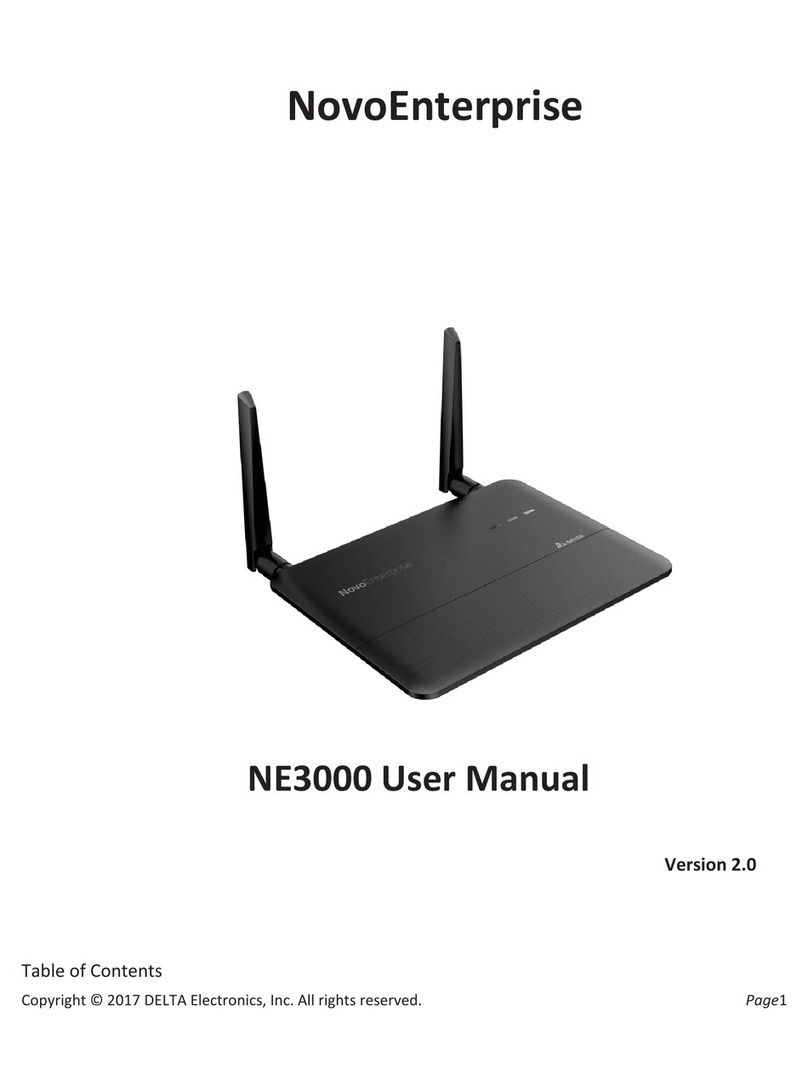
Delta
Delta NovoEnterprise NE3000 User manual

Delta
Delta DX-2300 Series User manual
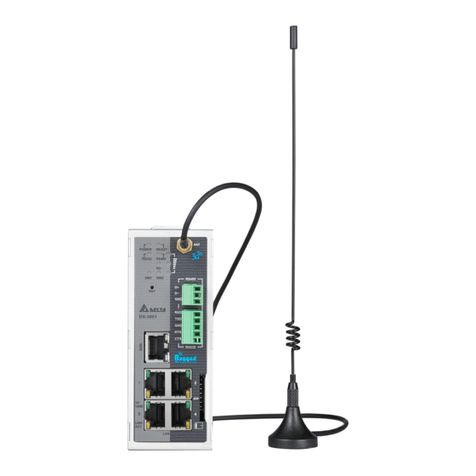
Delta
Delta DX-3001 Series User manual
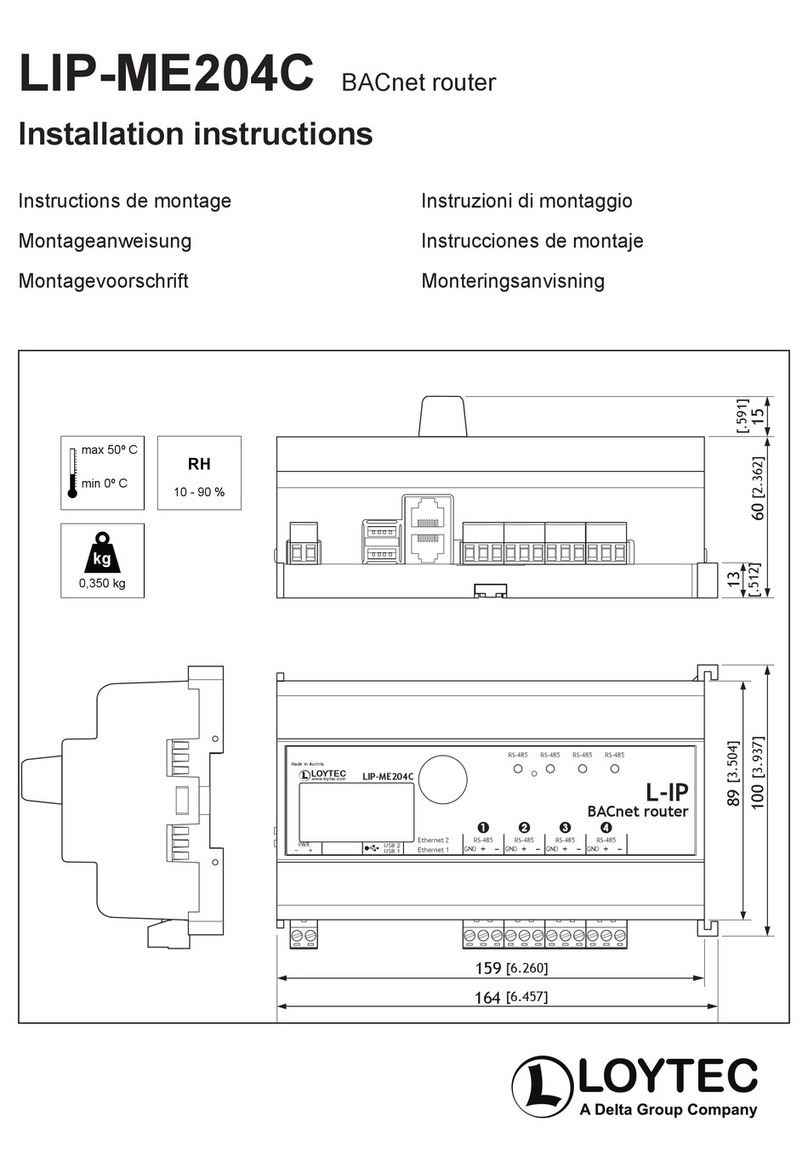
Delta
Delta Loytec LIP-ME204C User manual
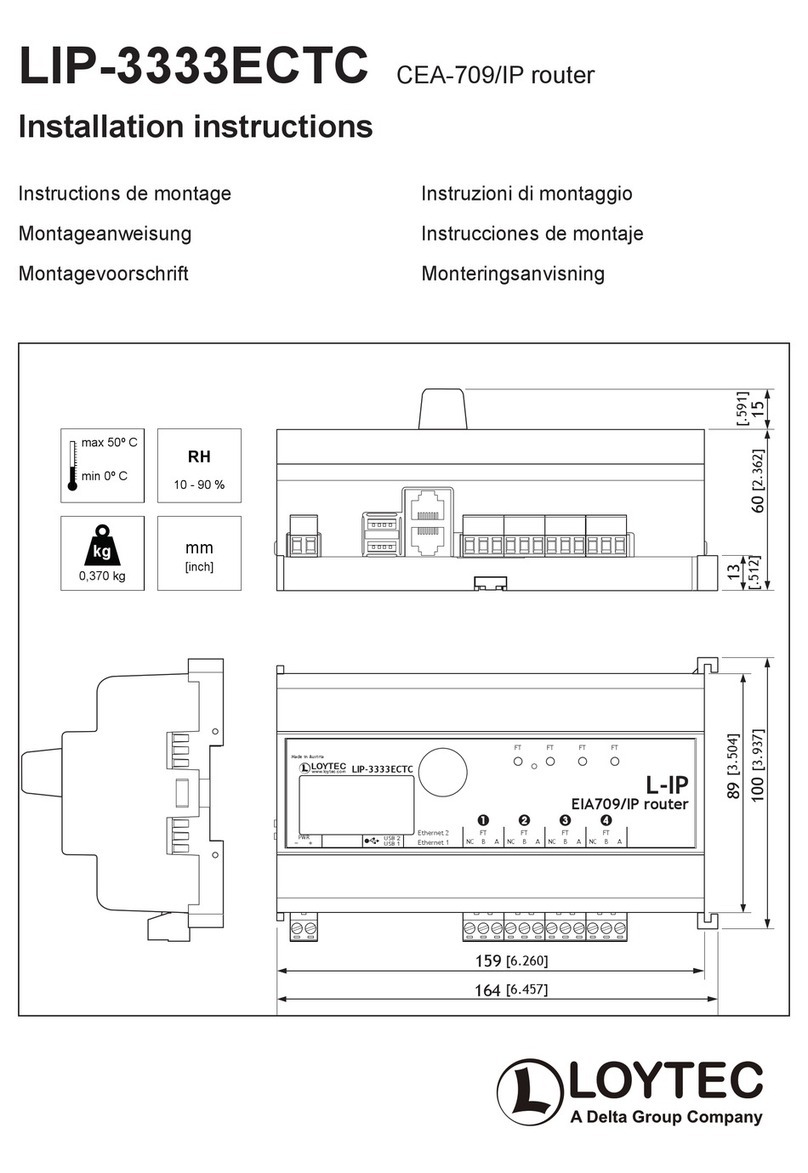
Delta
Delta Loytec LIP-3333ECTC User manual
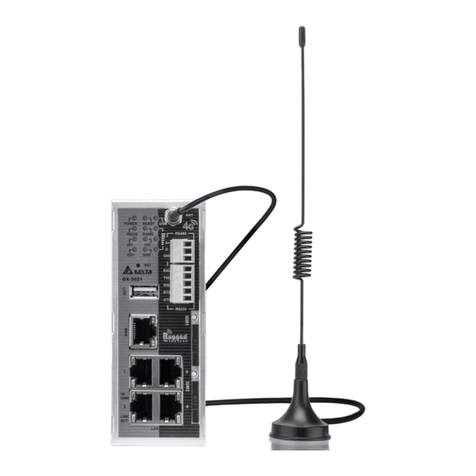
Delta
Delta DX-3021L9 Series User manual

Delta
Delta DX-3001H9-V User manual
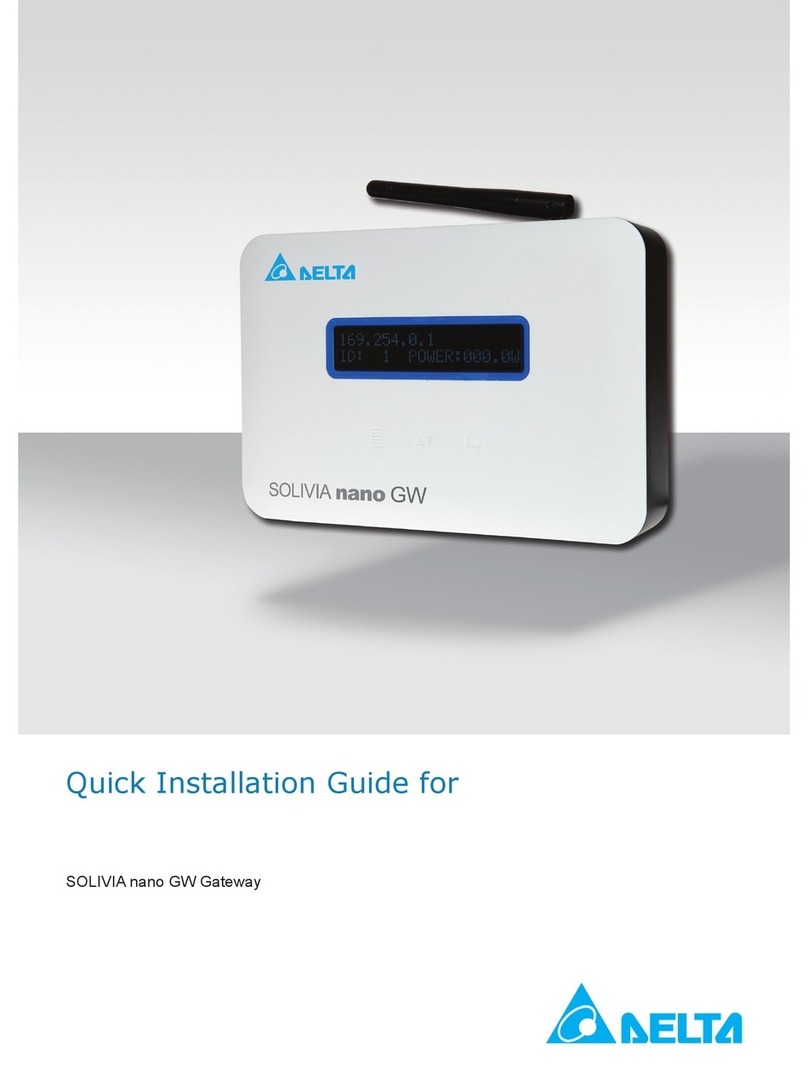
Delta
Delta SOLIVIA nano GW User manual

Delta
Delta DX-2100 Series User manual



